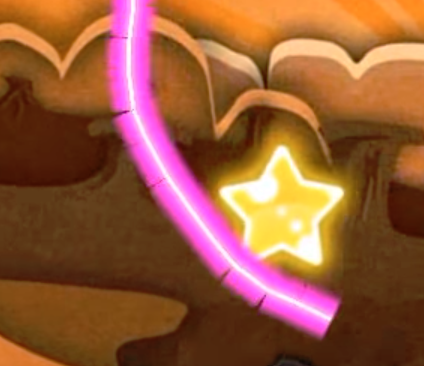Yeah, I’m pretty sure that is how he did it:


Yeah, I’m pretty sure that is how he did it:

Having the line fall would be a different trick. As you suggested you might consider connecting the objects together using joints.
I would not use a series of joints. I’d connect all bodies to a single point on one object.
B–>A
C–>A
D–>A
…
Z–>A
Yeah it seems like it.
Not perfect, but that would be ok in a children’s game.
Plasma Pig is gone unfortunately (I really liked it), but I can’t remember if lines could intersect in that game.
Your test looked great by the way, except for the not rotating part 
Thanks for the tip about the joints 
Blah!
Seems like using multiple weld joints makes the physics bodies scatter like crazy. It works when I draw a super short line, but not more.
Another thing is that for some reason I can’t seem to get the circles to create with the same distance (circleradius*=0.5). The faster I move the finger the more scattered the circles.
kinematic rects (act static for as long as need, then give velocity to simulate fall)
no chains, welds, multi-element bodies,…
Hmmm…that is clever. It could work.
The project you are looking for is called “Crayon Physics”. Creates a single multi-element physical body for each line fragment. As @davebollinger suggested.
I share a copy of code that I DID NOT DO but I can not find the author online:
However, I remember that the file had no restrictions.
I’m glad when someone here helps me, and I’m glad to reciprocate.
I hope it help.
Million thanks, @maximo97 
This is exactly what I was thinking about. And to get access to the code is just amazing.
I have been spending a lot of time figuring this out, but I realized it was just to complicated for me.
Now we can focus on the game, finally B)